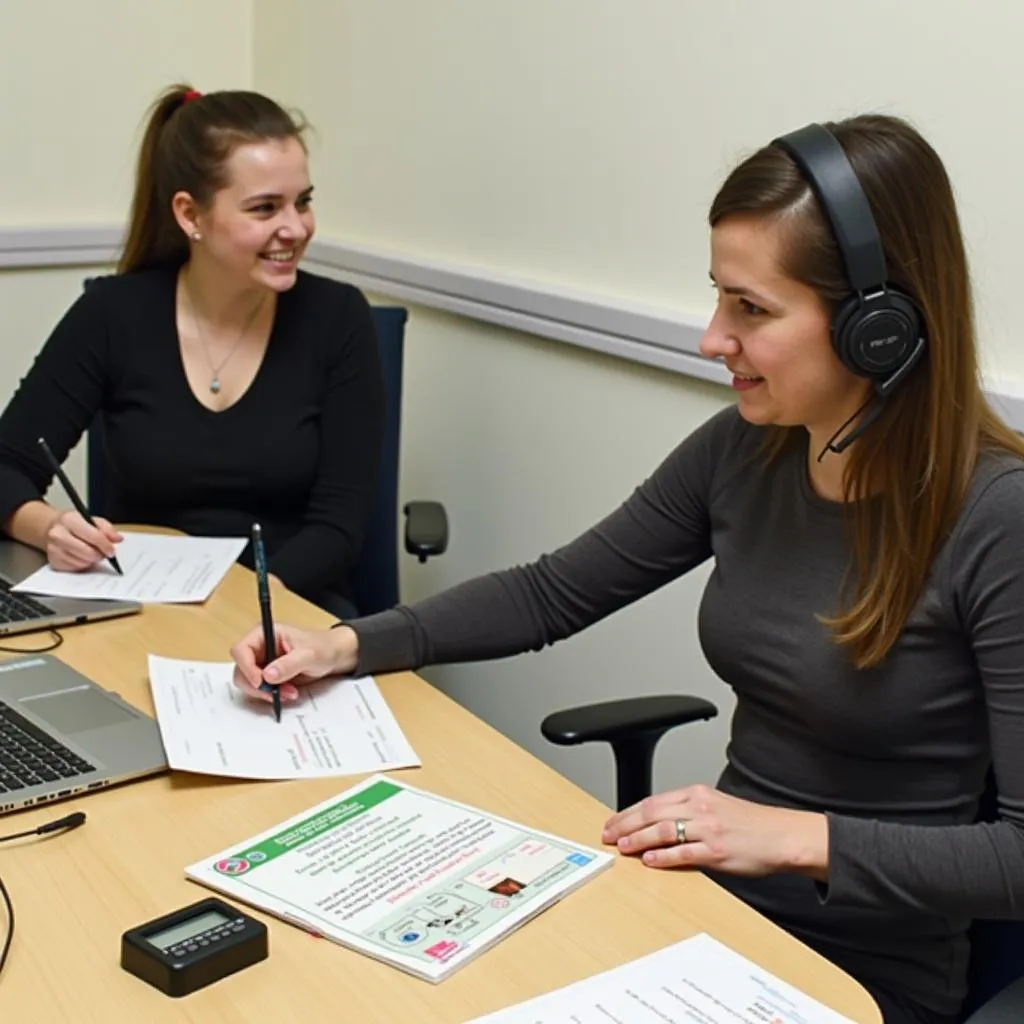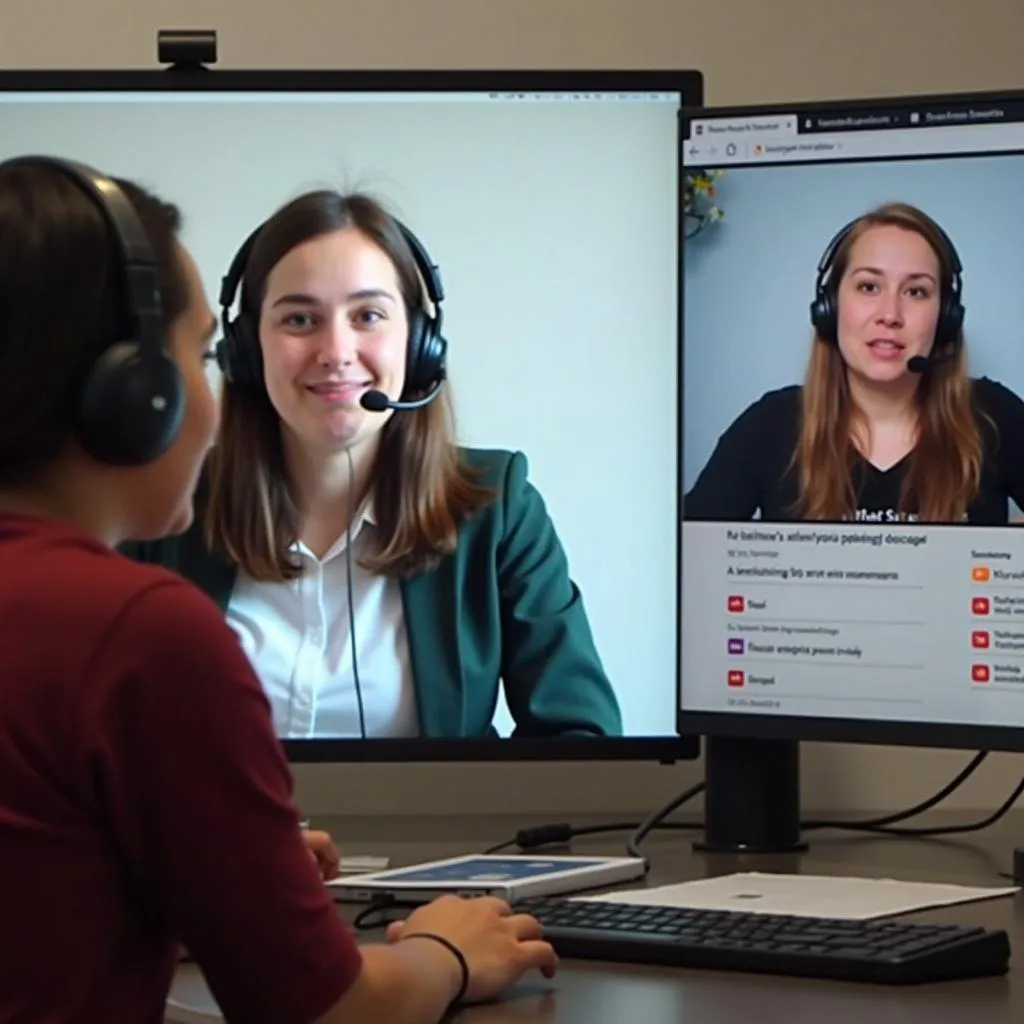Are you looking to boost your PTE Speaking score? Practicing with a partner can be a game-changer. This comprehensive guide will walk you through the most effective strategies to enhance your speaking skills while working with a study buddy. Let’s dive in and discover how you can master the PTE Speaking section together!
Why Practice PTE Speaking with a Partner?
Collaborating with a partner offers numerous benefits for PTE Speaking preparation:
- Immediate feedback on pronunciation and fluency
- Realistic conversation practice
- Increased motivation and accountability
- Opportunity to learn from each other’s strengths and weaknesses
- Reduced anxiety through familiarization with speaking tasks
PTE speaking section vocabulary usage is crucial for scoring high, and practicing with a partner can help you expand your lexical range effectively.
Setting Up Your Practice Sessions
To make the most of your partner practice, follow these steps:
- Choose a compatible study partner
- Set a regular schedule for practice sessions
- Decide on specific PTE Speaking tasks to focus on
- Gather necessary materials (sample questions, timer, recording device)
- Create a comfortable and quiet environment for practice
 Partners preparing for PTE speaking practice
Partners preparing for PTE speaking practice
Effective Strategies for Partner Practice
1. Role-Playing PTE Speaking Tasks
Take turns playing the role of the test-taker and the examiner. This approach helps you:
- Familiarize yourself with the test format
- Manage time effectively
- Develop strategies for handling different question types
Dr. Emma Thompson, a renowned PTE expert, states: “Role-playing is one of the most effective ways to prepare for the PTE Speaking section. It simulates the actual test environment and helps candidates build confidence.”
2. Targeted Pronunciation Practice
Focus on specific pronunciation challenges:
- Identify problematic sounds for each partner
- Practice tongue twisters and minimal pairs
- Use PTE pronunciation guide for non-native speakers to improve accuracy
3. Fluency-Building Exercises
Incorporate these exercises to enhance your speaking fluency:
- Timed speaking on random topics
- Shadowing native English speakers
- Practicing transitional phrases and filler words
Remember: Fluency is about speaking smoothly and confidently, not just quickly. Focus on maintaining a natural pace and rhythm.
4. Constructive Feedback Sessions
After each practice task:
- Provide specific, actionable feedback to your partner
- Discuss areas of improvement and strategies to address them
- Celebrate progress and successes, no matter how small
 Partners discussing PTE speaking performance
Partners discussing PTE speaking performance
5. Recording and Analysis
Make the most of technology in your practice:
- Record your speaking sessions
- Listen to recordings together and analyze performance
- Use speech recognition software to check pronunciation accuracy
Professor David Chen, a PTE Speaking coach, advises: “Regular recording and analysis of practice sessions can reveal patterns in your speaking that you might not notice in real-time. This self-awareness is key to improvement.”
Incorporating PTE-Specific Techniques
To truly excel in the PTE Speaking section, integrate these specific techniques into your partner practice:
- Content Development: Work on quickly generating ideas for Read Aloud and Describe Image tasks.
- Oral Fluency Drills: Practice speaking continuously for 40 seconds without long pauses or repetitions.
- Intonation and Stress Exercises: Focus on the rhythm and melody of English speech.
- Time Management Strategies: Develop techniques to pace yourself during timed tasks.
PTE speaking section fluency tips can provide additional guidance on mastering these aspects.
Overcoming Common Challenges
Partner practice may present some challenges. Here’s how to address them:
- Uneven Skill Levels: Focus on each partner’s individual growth rather than comparison.
- Scheduling Conflicts: Use online platforms for virtual practice when in-person meetings are difficult.
- Lack of Motivation: Set short-term goals and reward yourselves for achieving them.
- Overreliance on Feedback: Balance partner feedback with self-assessment and official PTE resources.
 Partners practicing PTE speaking online
Partners practicing PTE speaking online
Tracking Progress and Adjusting Strategies
To ensure continuous improvement:
- Keep a practice log to track your performance
- Regularly review and update your study plan
- Take mock tests to gauge your progress
- Adjust your focus based on your weakest areas
Refer to the PTE preparation checklist to ensure you’re covering all aspects of the exam.
Conclusion
Practicing PTE Speaking with a partner is an invaluable strategy for improving your performance. By implementing the techniques outlined in this guide, you’ll be well on your way to achieving your desired score. Remember, consistent practice and mutual support are key to success in the PTE Speaking section.
For those balancing work and study, check out these PTE exam preparation tips for working professionals to optimize your study time.
FAQ
How often should I practice PTE Speaking with a partner?
Aim for at least 2-3 sessions per week, each lasting 1-2 hours, for optimal improvement.
Can I practice PTE Speaking with a non-native English speaker?
Yes, practicing with non-native speakers can be beneficial, as it exposes you to different accents and speaking styles.
What if I can’t find a practice partner?
Consider joining online PTE study groups or language exchange platforms to connect with potential partners worldwide.
How can I make our practice sessions more engaging?
Incorporate variety by using different PTE Speaking tasks, discussing interesting topics, and setting fun challenges for each other.
Is it helpful to practice with multiple partners?
Yes, practicing with multiple partners can expose you to diverse speaking styles and feedback perspectives, enhancing your adaptability.
How do I know if I’m making progress in my PTE Speaking skills?
Track your scores on practice tests, monitor improvements in specific areas (e.g., pronunciation, fluency), and note any increased confidence in speaking tasks.